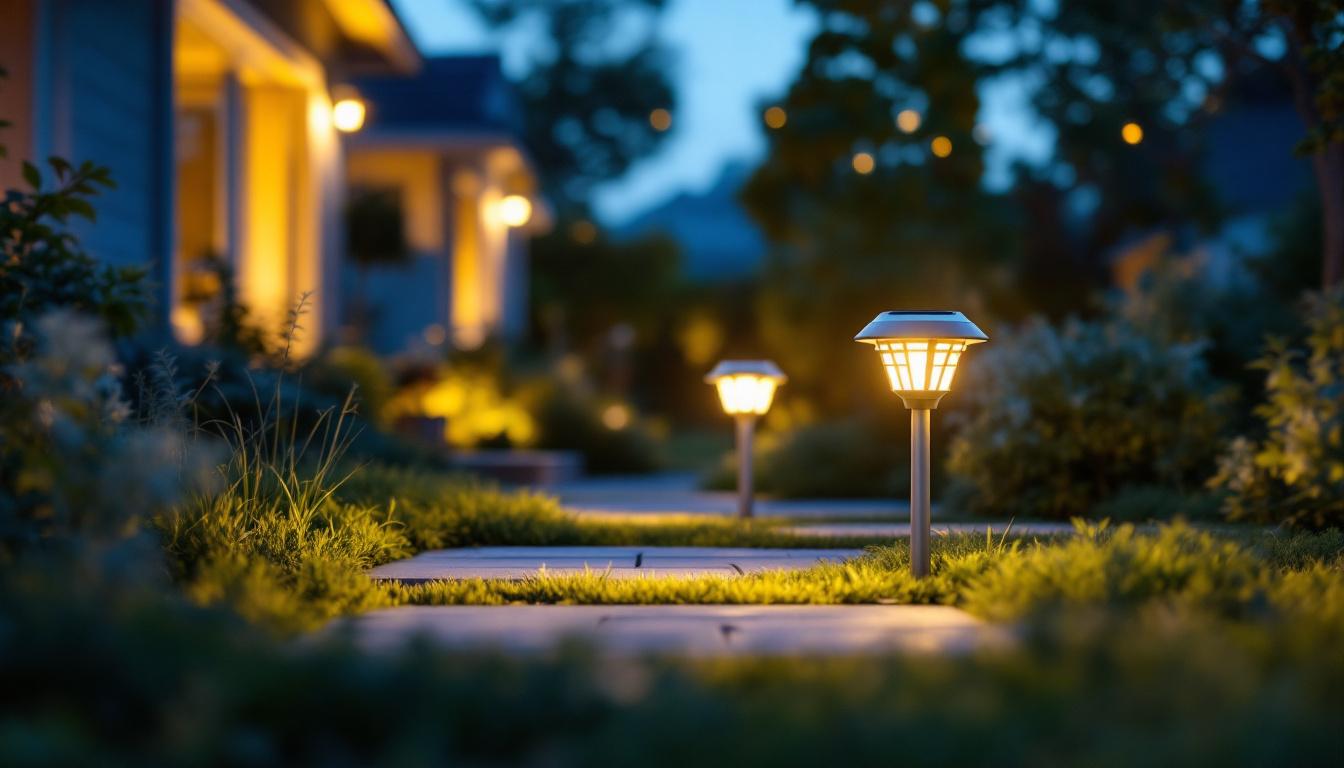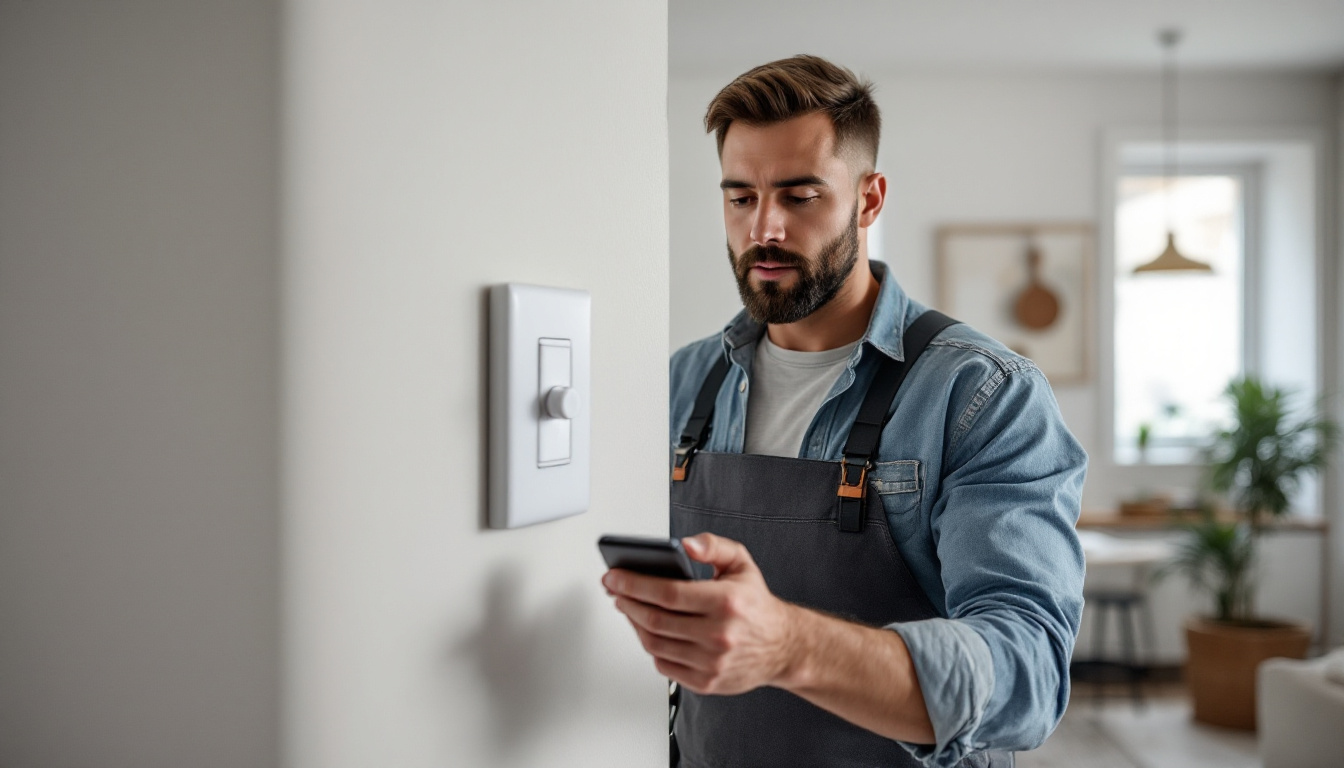
Flood security lights are essential for enhancing safety and security in various environments. As a lighting contractor, understanding the nuances of these lights can significantly impact your projects and client satisfaction. This article addresses common questions that lighting contractors often encounter regarding flood security lights, providing insights into their features, installation, and maintenance.
Flood security lights are powerful lighting fixtures designed to illuminate large areas, making them ideal for outdoor spaces such as parking lots, backyards, and commercial properties. Their primary purpose is to enhance visibility and deter criminal activity during nighttime. These lights not only provide safety but also create a welcoming atmosphere, illuminating pathways and entry points for guests and residents alike. With the right flood security lights, outdoor spaces can be transformed into well-lit environments that promote both security and comfort.
Flood security lights come with a variety of features that enhance their functionality. One of the most important aspects is their brightness, measured in lumens. The higher the lumen output, the brighter the light, which is crucial for ensuring safety in poorly lit areas. For instance, a light with a lumen output of 1,000 can effectively illuminate a large parking lot, while a residential backyard may only require a fixture with 500 lumens for adequate visibility.
Another critical feature is the beam angle. A wider beam angle allows for a broader coverage area, while a narrow beam can focus on specific spots. This versatility enables users to customize their lighting setup according to their needs. Additionally, many modern flood lights come equipped with motion sensors, which can activate the light when movement is detected, providing an extra layer of security. Some advanced models even offer adjustable sensitivity settings, allowing users to fine-tune the responsiveness of the motion detection to minimize false alarms from animals or passing vehicles.
There are several types of flood security lights available on the market, each catering to different needs and preferences. Traditional halogen lights are known for their bright output but have a shorter lifespan and higher energy consumption. On the other hand, LED flood lights have gained popularity due to their energy efficiency, longevity, and lower heat emission. LEDs can last up to 25,000 hours, making them a cost-effective choice in the long run.
Solar-powered flood lights are another option, ideal for areas without access to electricity. These lights harness solar energy during the day and provide illumination at night, making them an eco-friendly choice. Many solar models now come with built-in batteries that store energy for use during cloudy days or at night, ensuring consistent performance. Understanding these options allows contractors to recommend the best solution for their clients’ specific needs, taking into account factors like installation location and energy availability.
Choosing the right flood security light involves considering several factors, including the location, purpose, and budget. For instance, a commercial property may require higher lumen output and more durable materials compared to a residential setting. It’s also important to consider the aesthetic appeal of the lights, as they should complement the architecture and landscaping of the property.
Additionally, it’s essential to assess the environmental conditions. Areas prone to harsh weather may benefit from weather-resistant fixtures. Many flood lights are now designed with rugged housing materials that can withstand extreme temperatures, rain, and wind. Evaluating the specific requirements of each project ensures that the chosen flood light meets the client’s expectations and enhances safety effectively. Furthermore, consulting with lighting professionals can provide valuable insights into the latest technologies and trends in flood lighting, ensuring that clients receive the most effective and efficient solutions for their needs.
Proper installation of flood security lights is crucial for maximizing their effectiveness and longevity. Lighting contractors must be aware of several key considerations to ensure a successful installation process.
The height at which flood security lights are installed significantly impacts their performance. Generally, mounting lights at a height of 10 to 20 feet is recommended. This height allows for optimal coverage while minimizing the risk of vandalism.
However, the specific height can vary depending on the type of light and the area being illuminated. For example, lights installed in parking lots may require a different height compared to those used in residential backyards. It’s essential to assess each project individually to determine the best mounting height.
Wiring flood security lights requires careful planning to ensure safety and functionality. For most installations, running electrical wiring through conduit is advisable to protect the wires from damage and environmental factors.
Contractors should also consider the use of timers or photocells to automate the lighting system. Timers can be set to turn lights on and off at specific times, while photocells allow lights to activate based on ambient light levels. These features enhance convenience and energy efficiency.
Several common mistakes can occur during the installation of flood security lights that can compromise their effectiveness. One major mistake is improper positioning. If lights are aimed incorrectly, they may not provide adequate coverage or could create glare for drivers or pedestrians.
Another common error is neglecting to secure the fixtures properly. Loose fixtures can lead to misalignment or damage over time. Additionally, failing to follow local electrical codes can result in safety hazards or legal issues. Ensuring compliance with regulations and best practices is essential for a successful installation.
Regular maintenance of flood security lights is vital to ensure their longevity and performance. Lighting contractors should be prepared to address common maintenance issues and troubleshooting techniques.
It is advisable to inspect flood security lights at least twice a year. Regular inspections help identify potential issues such as burnt-out bulbs, loose wiring, or physical damage to the fixtures. Early detection of problems can prevent costly repairs and ensure that the lights function effectively when needed.
In addition to visual inspections, cleaning the fixtures periodically is essential. Dust, dirt, and debris can accumulate on the lenses, reducing light output. A simple cleaning routine can significantly enhance the performance of flood security lights.
Several common issues can arise with flood security lights. One frequent problem is flickering or dimming lights, which may indicate a faulty bulb or wiring issue. In such cases, replacing the bulb or checking the wiring connections can often resolve the problem.
Another issue is lights that fail to turn on. This could be due to a blown fuse, tripped circuit breaker, or a malfunctioning photocell or timer. Troubleshooting these components can help identify the root cause and restore functionality.
Extending the lifespan of flood security lights involves implementing best practices for maintenance and usage. Using high-quality bulbs and fixtures is a crucial first step. Investing in durable, weather-resistant materials can significantly enhance longevity.
Additionally, ensuring proper installation and wiring can prevent issues that may lead to premature failure. Educating clients about the importance of regular maintenance and inspections can also contribute to the long-term performance of their flood security lights.
Understanding the cost implications of flood security lights is essential for lighting contractors when providing estimates and recommendations to clients. Several factors influence the overall cost of a flood lighting project.
The cost of flood security lights can vary widely based on the type, brand, and features. Traditional halogen lights are generally less expensive upfront but may incur higher energy costs over time. In contrast, LED flood lights may have a higher initial cost but offer significant savings in energy consumption and maintenance.
On average, contractors can expect to pay anywhere from $50 to $300 per fixture, depending on the specifications. It’s essential to consider the long-term savings associated with energy-efficient options when discussing costs with clients.
In addition to the cost of the fixtures themselves, installation costs must also be factored into the overall budget. Installation costs can vary based on the complexity of the project, the height of the installation, and any additional features such as timers or motion sensors.
Contractors should provide clients with a detailed estimate that outlines both the material and labor costs. Transparency in pricing helps build trust and ensures clients understand the value of the investment they are making in flood security lights.
Many regions offer incentives for the installation of energy-efficient lighting solutions, including flood security lights. These incentives can come in the form of rebates, tax credits, or grants aimed at promoting energy conservation.
Contractors should stay informed about local and state programs that encourage the adoption of energy-efficient technologies. Educating clients about potential savings and incentives can enhance the appeal of investing in LED flood lights and other eco-friendly options.
Flood security lights play a crucial role in enhancing safety and security in various environments. By understanding the common questions surrounding these fixtures, lighting contractors can provide valuable insights and recommendations to their clients. From selecting the right type of light to ensuring proper installation and maintenance, contractors can significantly impact the effectiveness of flood security lighting solutions.
As the demand for security lighting continues to grow, staying informed about the latest trends and technologies will be essential for lighting contractors. By addressing client concerns and providing expert guidance, contractors can build strong relationships and establish themselves as trusted professionals in the field.
Ready to elevate your lighting projects with superior flood security lights? At LumenWholesale, we provide lighting contractors like you with the highest quality, spec-grade lighting products at prices that can’t be beaten. Say goodbye to inflated markups and hello to our extensive selection that meets rigorous industry standards. With our commitment to affordability and convenience, you’ll enjoy hassle-free bulk buying, free shipping, and the assurance of premium lighting for every project. Don’t compromise on quality or value—choose LumenWholesale for Wholesale Lighting at the Best Value and make your next installation a shining success.

Discover how outdoor solar lights are transforming the landscape for lighting contractors, offering sustainable solutions that enhance aesthetics and efficiency.

Discover the essential guide to setting timers on Maestro motion sensor switches and learn why lighting contractors should prioritize this skill.

Discover the top strategies lighting contractors use to choose the perfect LED bulb types for any project.

Discover the essential insights lighting contractors need to meet client expectations for LED under cabinet strip lighting.